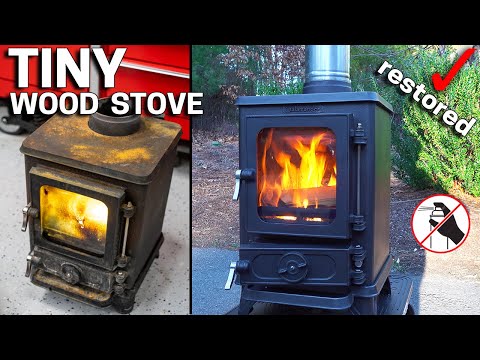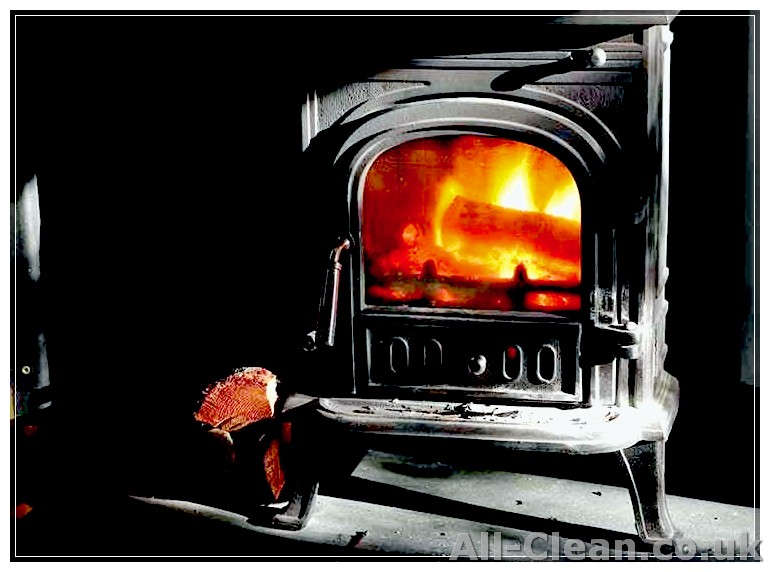
Restoring a cast iron fireplace can be a rewarding project that brings back the charming beauty of a Victorian-era house. Whether you have a neglected piece or simply want to give your fireplace a fresh look, this step-by-step guide will help you through the process.
First, you’ll need to gather the materials you’ll need for the restoration. This might include paint stripper, a wire brush, steel wool, rust-proof primer and paint, a thick pair of gloves, and some old newspapers to protect your working area.
Start by carefully removing any accessories, such as a marble surround or a grate, and storing them safely away. Use a vacuum to remove any loose ash or debris from the fireplace.
Next, you’ll want to remove any existing layers of paint or rust from the surface of the cast iron. This can be done using paint stripper and a wire brush. Be careful when working with the stripper and follow the instructions carefully, as it can be harmful if not used correctly.
Once the surface is clean and rust-free, you can begin repainting. Apply a rust-proof primer and let it dry according to the manufacturer’s instructions. Then, apply a coat of paint in the color of your choice. For a more authentic look, a black or dark gray paint is often preferred.
When the paint has dried, you can carefully replace any accessories you took off earlier. Clean the grate if needed, and make sure everything is securely in place.
Finally, give your restored cast iron fireplace a good clean. Use a mild cleaner or white vinegar mixed with water to remove any dirt or residue. Be careful not to scratch or damage the painted surface.
Following these steps will help you restore your cast iron fireplace back to its former glory. If you’re not confident in your DIY skills or if the fireplace is heavily damaged, it might be best to consult an expert who specializes in cast iron restoration. They will have the knowledge and expertise to ensure a successful restoration.
Now that you know how to restore a cast iron fireplace, you can start working on your own project. Remember to follow safety guidelines and take your time to achieve the best results. Good luck!
- Choosing the Right Tools and Materials
- Tools
- Materials
- Removing the Existing Paint and Rust
- What You’ll Need
- The Process
- Repairing Any Damaged Parts
- Prepping the Surface for Painting
- 1. Gather the necessary materials
- 2. Remove any old layers of paint
- 3. Strip any stubborn areas
- 4. Clean the surface thoroughly
- 5. Sand the surface
- 6. Mask off areas that won’t be painted
- 7. Apply a suitable primer
- 8. Start painting
- Applying the Paint
- Finishing Touches and Maintenance
- 1. Cleaning the Surface
- 2. Rust-Proofing
- 3. Maintaining the Surround
- 4. Fireplace Maintenance
- 5. Fire Safety Tips
- Restoring a Victorian Fireplace to Former Glory
- Step 1: Clean the Fireplace
- Step 2: Remove Rust and Stains
- Step 3: Strip the Paint
- Step 4: Repaint or Recondition the Iron
- Step 5: Restore the Surround
- Step 6: Final Touches
- Assessing the Condition of the Fireplace
Choosing the Right Tools and Materials
When it comes to restoring a cast iron fireplace, choosing the right tools and materials is essential to ensure an easy and successful project. There are several categories of tools and materials that you will need to gather before getting started.
Tools
- A wire brush: This tool will be used to remove any loose debris, paint, or rust from the surface of the fireplace.
- Gloves: It’s always important to protect your hands while working with potentially harmful substances or surfaces.
- Sandpaper or grit sanding sponge: These tools are necessary for removing any remaining paint and smoothing out the surface of the fireplace.
- A paint scraper: This tool is useful for scraping away any stubborn paint or damaged areas.
- White spirit or paint stripper: Depending on the condition of your fireplace, you may need a paint stripper to completely remove layers of paint or varnish.
- Soft cloths: These will be used for applying paint stripper or wipe away excess residue.
- Black stove polish: This material will be used to restore the black finish of the fireplace.
- Paintbrush: You will need a paintbrush to apply the black stove polish evenly onto the surface of the fireplace.
- Safety goggles: It’s important to protect your eyes from any potential splashes or debris.
- Dust mask: This will help you to avoid inhaling any dust or particles while working.
Materials
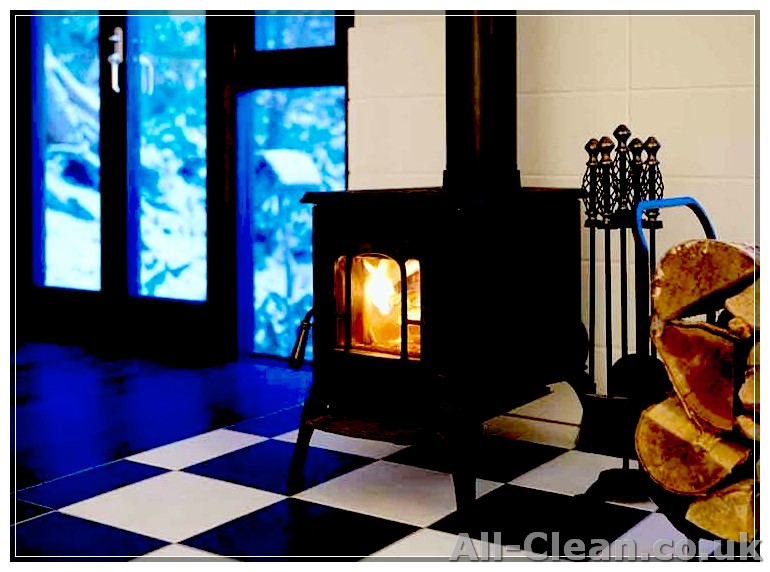
- Paint remover: If your fireplace is currently painted, a paint remover will be needed to strip away the layers of paint. Make sure to choose a product that is suitable for cast iron surfaces.
- Rust remover: For cast iron fireplaces that have rust, a rust remover will be necessary to get rid of the rust completely.
- Black stove polish: This material is essential for restoring the black finish of the fireplace. It creates a protective coating that can withstand high temperatures.
- Primer: If you plan to repaint your fireplace, a primer will be needed to ensure that the new paint adheres properly and lasts longer.
- Heat-resistant paint: If you want to repaint your cast iron fireplace, choose a heat-resistant paint that is specifically designed for this purpose.
- Protective equipment: In addition to gloves, safety goggles, and a dust mask, it’s important to have adequate ventilation in the area where you will be working. This will help to keep you safe from any fumes or strong odors that may be released from the chemicals you’ll be using.
By gathering the right tools and materials before starting your project, you can ensure that the process goes smoothly and that you achieve the best possible results. Follow the steps in this guide to restore your cast iron fireplace and bring it back to its original Victorian charm.
Removing the Existing Paint and Rust
Before you can start restoring your cast iron fireplace to its former glory, it needs some work to remove the existing paint and rust. But don’t worry, it’s an easy task that will greatly enhance the overall look of your fireplace.
What You’ll Need
- A wire brush
- Powdered rust remover
- A scraper or putty knife
- Gloves and safety goggles
The Process
- First, make sure to protect your surroundings by covering the area around the fireplace with old sheets or newspaper.
- Put on your gloves and safety goggles for protection.
- Start by using the wire brush to remove any loose paint or rust from the surface of the fireplace.
- Next, apply the powdered rust remover to the areas that are heavily rusted. Follow the instructions on the packaging for best results.
- Leave the rust remover to work its magic for the recommended amount of time.
- Once the rust remover has had a chance to work, use a scraper or putty knife to gently remove the loose paint and rust from the surface of the fireplace.
- Continue working through the steps until you have removed as much of the damaged paint and rust as you can.
- If there are any hard-to-reach areas, you can use a small wire brush or a piece of steel wool to clean them.
By now, your cast iron fireplace should be looking much better and ready for the next steps in the restoration process. But before we move on, here are a few tips to keep in mind:
- Be careful when working around the fireplace, as the surface can be hot and soot may be present.
- If you’re unsure about any step in the restoration process, it’s always a good idea to seek professional help.
- Sometimes, cast iron fireplaces may have decorative tiles or a glassware surround. These delicate materials should be removed before applying any paint or rust remover.
- Keep in mind that some cast iron fireplaces may have cracks or other damage. If this is the case, it’s best to have them repaired before continuing with the restoration process.
Now that you know how to remove the existing paint and rust from your cast iron fireplace, you can start working towards bringing it back to its original beauty. Stay tuned for the next steps on repainting and reassembling your fireplace in our upcoming articles.
Repairing Any Damaged Parts
If your cast iron fireplace has any damaged parts, it’s important to address them before starting the restoration process. Here are some steps you may need to take:
- Assess the damage: Carefully inspect the fireplace to identify any cracks, chips, or other damage that needs to be repaired.
- Remove loose or damaged parts: If there are any loose or damaged parts, such as decorative elements or tiles, carefully remove them.
- Clean the damaged areas: Use a mild cleaner and a soft brush to clean the damaged areas, removing any dirt or debris. Make sure the surface is dry before proceeding.
- Repair cracks or chips: Follow the instructions on a suitable repair material, such as epoxy or a cast iron filler, to fix any cracks or chips. Apply the repair material and allow it to dry completely.
- Replace missing parts: If any parts are missing, try to find replacements that match the original design. If finding exact matches is not possible, consider consulting with an expert in cast iron fireplace restoration for advice.
- Restore or replace damaged tiles: If the fireplace has decorative tiles that are damaged, you can either restore them by carefully cleaning and repairing them, or replace them with new tiles that match the original design.
It is important to note that the extent of the repair will depend on the damage and your skill level. If you are not confident in your ability to repair the damaged parts, it is recommended to consult with an expert.
Now that you know how to repair any damaged parts of your cast iron fireplace, you can confidently move on to the next steps in the restoration process.
Prepping the Surface for Painting
Before you start painting your cast iron fireplace, it is important to properly prep the surface to ensure a smooth and long-lasting finish. Here are the steps you need to follow:
1. Gather the necessary materials
Make sure you have all the materials you will need for prepping the surface. This includes protective gloves, goggles, a dust mask, scrapers or wire brushes, sandpaper or an electric sander, a vacuum cleaner, and a suitable paint remover.
2. Remove any old layers of paint
Using scrapers or wire brushes, carefully remove any loose or flaking paint from the fireplace surround. It’s important to remove all the old layers of paint down to the bare metal. This could be a time-consuming task, especially if the fireplace hasn’t been painted in years.
3. Strip any stubborn areas
If there are any stubborn areas where the paint isn’t easily coming off, you may need to use a suitable paint stripper. Follow the instructions on the paint remover carefully and apply it to the areas that need extra attention. Allow the stripper to soak for as long as possible before scraping it off.
4. Clean the surface thoroughly
Once you have stripped off all the old paint, clean the surface of the cast iron fireplace to remove any residue. Use a vacuum cleaner to remove any dust or loose particles, and then wipe it down with a clean cloth soaked in water and mild detergent. Make sure the surface is completely clean and free from any dirt or grease.
5. Sand the surface
After the surface is cleaned, use sandpaper or an electric sander to smooth out any rough areas or marks. Sand the surface gently in a circular motion, being careful not to apply too much pressure. This will create a smooth and even surface, ready for painting.
6. Mask off areas that won’t be painted
If there are any areas of the cast iron fireplace that you don’t want to be painted, such as the glass or the back, mask them off with painter’s tape or newspaper. This will help protect these areas from accidental paint splatters.
7. Apply a suitable primer
Before applying the final coat of paint, it is recommended to apply a suitable primer to the cast iron fireplace. This will help the paint adhere better and provide a more even finish. Follow the manufacturer’s instructions for applying the primer and allow it to dry completely before moving on to the next step.
8. Start painting
Now that the surface is prepped and the primer is dry, you can start painting your cast iron fireplace. Use a suitable paint for cast iron surfaces and apply thin and even coats. Follow the manufacturer’s instructions for application and drying times.
By following these steps and properly prepping the surface of your cast iron fireplace, you can achieve amazing results and give your fireplace a fresh and restored look.
Applying the Paint
After stripping away the layers of old paint and cleaning the cast iron surface, it’s time to apply a fresh coat of paint to restore its original beauty. Here is a step-by-step guide on how to apply the paint:
- Start by making sure the surface is completely clean and dry. Use a high-quality wire wool or steel brush to remove any remaining rust, soot, or grease.
- If there are any cracks or damaged areas on the cast iron, make sure to address them before applying the paint. You can use a cast iron filler to fill in the cracks and make the surface even.
- Apply a layer of primer specifically designed for cast iron. This will help the paint adhere better and prevent any future damage.
- Choose a heat-resistant paint that is suitable for cast iron fireplaces. Black or white are the most common colors, but you can also go for a different shade if you wish.
- Using a paintbrush or a roller, carefully apply an even coat of paint to the cast iron surface. Make sure to cover all the areas and reach into any difficult corners.
- If you have tiles or brickwork surrounding the cast iron fireplace, use masking tape to protect them from any accidental paint splatters.
- Allow the first coat of paint to dry completely before applying a second coat. This will ensure a smooth and even finish.
- If you wish to give your cast iron fireplace a distressed look, you can lightly sand the surface after applying the paint. This will create a vintage effect.
- Once the final coat of paint is dry, you can buff the cast iron surface with a soft cloth to make it shine and give it a polished finish.
By following this step-by-step guide, you can easily restore your cast iron fireplace to its former glory. If you feel that you lack the expertise or time to do it yourself, it’s always a good idea to consult a professional for assistance. They can guide you through the restoration process and ensure that your fireplace looks its best.
Finishing Touches and Maintenance
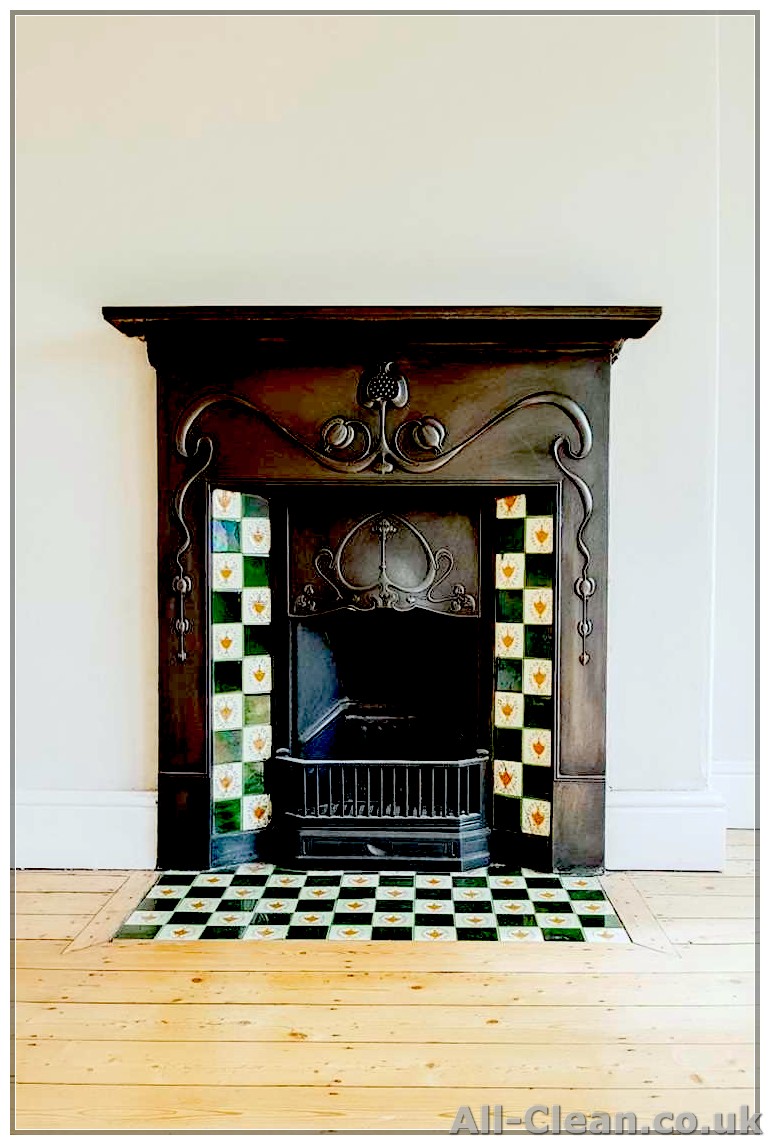
Once the restoration of your cast iron fireplace is complete and it is back in its rightful place, there are a few finishing touches and maintenance tips you should follow to ensure its longevity and keep it looking its best.
1. Cleaning the Surface
To maintain the beautiful look of your restored cast iron fireplace, it is important to regularly clean the surface. Use a soft cloth or sponge to wipe away any dust or soot that may accumulate over time. Avoid using harsh chemical cleaners or steel wool, as they can scratch the surface of the cast iron.
2. Rust-Proofing
One common issue with cast iron fireplaces is the possibility of rust formation. To prevent rust from taking hold, you can apply a rust-proof coating to the surface. There are various rust-proof sprays and paints available on the market that can help protect your fireplace from moisture and oxidation.
3. Maintaining the Surround
If your cast iron fireplace has a surround made of stone, marble, or another material, it is important to take care of it as well. Regularly dust and wipe down the surface of the surround to keep it looking clean and well-maintained. Avoid using abrasive cleaners that could damage the material.
4. Fireplace Maintenance
To keep your fireplace in optimal working condition, it is important to have it cleaned and inspected regularly. Consult with a professional fireplace expert to determine the best cleaning and maintenance schedule for your specific fireplace.
5. Fire Safety Tips
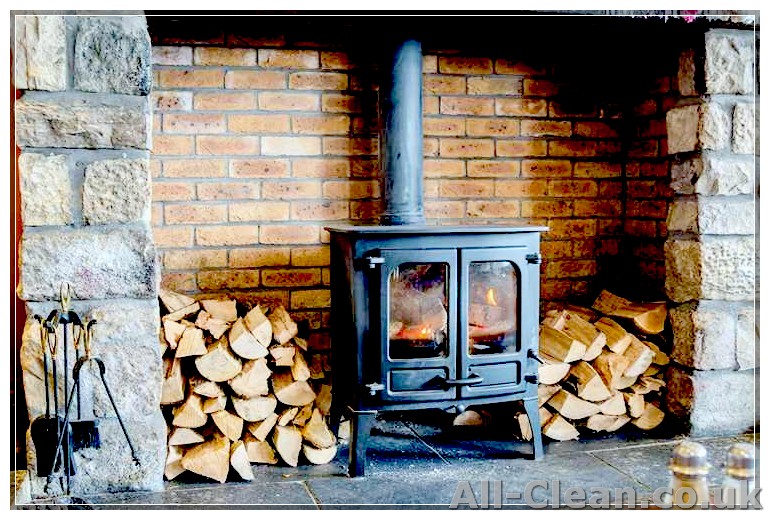
When using your restored cast iron fireplace, there are a few fire safety tips to keep in mind:
- Always use a fireplace grate or screen to contain the fire and prevent embers from escaping.
- Only burn dry, seasoned wood in your fireplace to reduce the amount of soot and creosote buildup.
- Keep flammable items, such as furniture and curtains, at a safe distance away from the fireplace.
By following these tips and properly maintaining your restored cast iron fireplace, you can enjoy its beauty and warmth for many years to come.
Restoring a Victorian Fireplace to Former Glory
If you are lucky enough to have a Victorian fireplace in your home, you know how it can add character and charm to any living space. However, over the years, these beautiful fireplaces can become worn and damaged. But don’t worry! With a few simple steps, you can easily restore your Victorian fireplace to its former glory.
Step 1: Clean the Fireplace
Start by thoroughly cleaning the fireplace. Use a soft brush to remove any dust and debris from the surface of the cast iron. Wipe it down with a damp cloth to remove any remaining dirt.
Step 2: Remove Rust and Stains
If there is any rust or stains on the cast iron, you will need to remove them before proceeding with the restoration. Use a rust remover or a mixture of baking soda and water to gently scrub away the rust and stains. Be sure to follow the instructions on the rust remover product and wear gloves to protect your hands.
Step 3: Strip the Paint
If your Victorian fireplace has been painted, you will need to strip the paint before applying any new coats. Use a paint stripper suitable for cast iron and follow the instructions on the product. This will help you get down to the original cast iron surface.
Step 4: Repaint or Recondition the Iron
Once you have stripped the paint, you can choose to repaint the cast iron or recondition it to its original state. If you opt for repainting, use a high-heat paint that is suitable for fireplaces. Apply multiple thin coats for the best results.
Step 5: Restore the Surround
If your Victorian fireplace has a surround, such as a stone or timber frame, you will want to restore it as well. Clean the surround thoroughly, removing any dirt or grime. If necessary, use specific cleaning methods or materials for the type of surround you have. Repair any damage or cracks, and consider repainting or refinishing the surround to match the restored cast iron.
Step 6: Final Touches
Once all the restoration steps are completed, give your Victorian fireplace a final touch. Clean any glassware or decorative elements that you may have. Organize the firewood or other fireplace accessories nearby for a complete look. You can also add small accents, such as candles or plants, to enhance the ambiance of the fireplace.
By following these step-by-step instructions, you can restore your Victorian fireplace to its former glory. Whether you choose to do it yourself or hire a professional, make sure to take the necessary precautions and use appropriate materials for the restoration. If you have any questions or want more expert advice, feel free to reach out to our experts who will be happy to assist you.
Assessing the Condition of the Fireplace
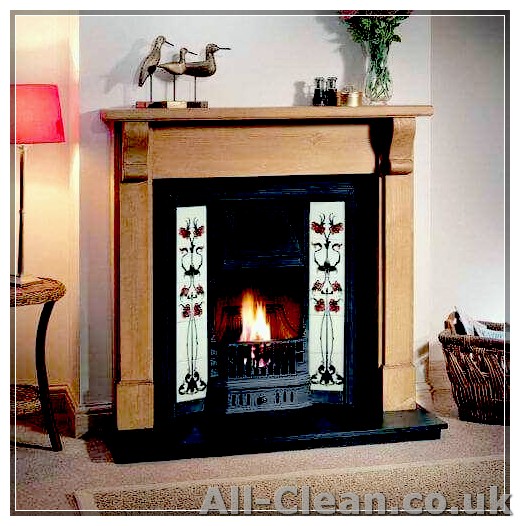
Before starting the restoration process, it’s important to assess the condition of the cast iron fireplace. This will help you determine the scope of the project and what steps need to be taken to restore it to its former glory.
1. Sanding
Take a close look at the fireplace and see if there are any areas that need sanding. Sanding is necessary to remove any rough or uneven surfaces and create a smooth base for the paint or finish. Use a fine-grit sandpaper and be careful not to damage the cast iron surface.
2. Cleaning
Clean the fireplace thoroughly to remove any dirt, dust, or grime. Use a non-abrasive cleaner suitable for cast iron or mild soap and water. Be careful not to scratch the surface, especially if there are delicate details or designs.
3. Assessing Cracks or Damage
Inspect the fireplace for any cracks or damage, especially in areas such as the tiles or glass panels. Cracks can be a sign of structural issues and might require professional help to fix. If there are any loose or broken pieces, gather them carefully and assess if they can be repaired or replaced.
4. Assessing the Grate or Fire Basket
If your fireplace has a grate or fire basket, assess its condition as well. Look for any signs of rust or deterioration, and determine if it needs to be cleaned or replaced.
5. Assessing the Surrounding Materials
If your cast iron fireplace is set in a surround made of wood, stone, or tiles, assess their condition too. Look for any signs of damage or wear, and determine if they need to be repaired or replaced as well.
6. Seeking Expert Advice
If you’re unsure about the condition of your cast iron fireplace or if you’re not confident in your restoration skills, it’s always a good idea to seek advice from experts in the field. They will be able to provide guidance on the best course of action and ensure that the restoration process is done correctly.
By assessing the condition of your cast iron fireplace, you’ll know exactly what steps to take to restore it. Whether it’s a Victorian-style fireplace or a more modern steel version, restoring it to its former glory will bring a beautiful and amazing focal point to your living space.
